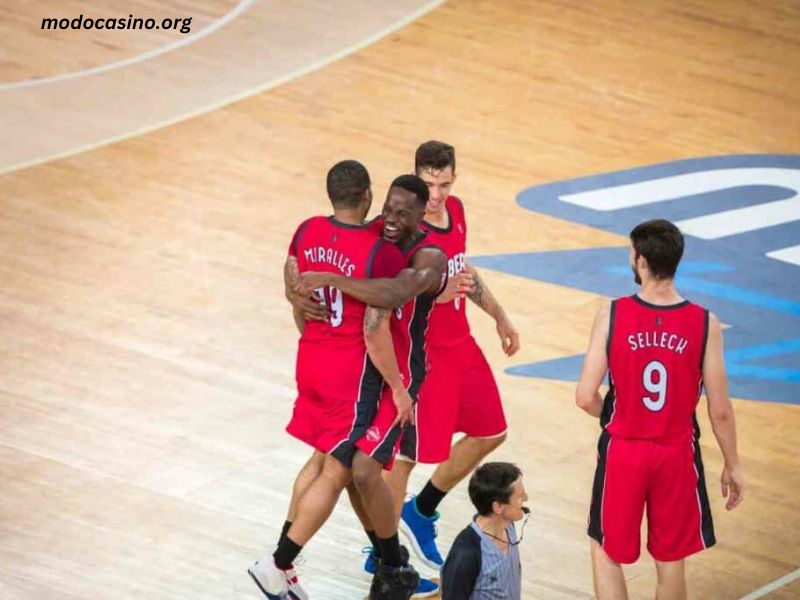The National Basketball Association (NBA) is one of the most popular sports leagues in the world, captivating audiences with its high-paced action, incredible athleticism, and strategic gameplay. A crucial aspect of this electrifying game is its timing structure, specifically the length of NBA quarters, which forms the framework for the entire match. But how long are NBA quarters, and what makes this timing unique compared to other basketball leagues? This article will delve into the intricacies of NBA quarters, exploring their length, historical evolution, and the impact they have on the game.
Length of NBA Quarters
An NBA game consists of four quarters, each lasting 12 minutes. This totals 48 minutes of game time, excluding potential overtime periods and other stoppages. These 12-minute quarters are one of the distinguishing factors of the NBA compared to other basketball leagues, which often use shorter quarters.
For example:
- FIBA (International Basketball Federation): Games are played with four 10-minute quarters, resulting in 40 minutes of total game time.
- NCAA (College Basketball): Men’s games have two 20-minute halves (40 minutes total), while women’s games follow the four 10-minute quarter format.
- High School Basketball: Typically features four 8-minute quarters, amounting to 32 minutes of play.
The 12-minute quarter structure allows for a longer game duration, giving players more time to showcase their skills and strategize effectively. It also offers fans an extended viewing experience, which contributes to the NBA’s entertainment value.
Why Are NBA Quarters 12 Minutes Long?
The decision to set NBA quarters at 12 minutes dates back to the league’s inception in 1946. The founders of the NBA, then called the Basketball Association of America (BAA), wanted to distinguish the professional league from college basketball, which featured 20-minute halves.
By adopting 12-minute quarters, the league aimed to:
- Enhance Entertainment: Longer quarters provided more opportunities for dynamic plays and higher scoring, appealing to fans seeking an engaging spectacle.
- Test Player Endurance: Professional players are expected to maintain peak performance for extended periods, and the 12-minute quarters allowed the league to highlight their stamina and skill.
- Create a Unique Identity: Differentiating the NBA from collegiate and amateur basketball helped establish it as the premier professional basketball league.
Breakdown of an NBA Game
While the total game time is 48 minutes, an NBA game lasts much longer in real time due to various factors. Here’s a breakdown of the timing elements:
1. Quarters and Halftime
- First Half: Comprises the first two quarters, with a short break between them.
- Halftime: A 15-minute intermission occurs after the second quarter, giving players time to rest and coaches an opportunity to adjust strategies.
- Second Half: Comprises the third and fourth quarters, following a similar format as the first half.
2. Timeouts
Each team is allocated seven timeouts per game, with restrictions on how they can be used during each half. Additionally, mandatory TV timeouts occur to accommodate commercial breaks, further extending the game’s duration.
3. Fouls and Free Throws
Fouls and subsequent free throws frequently stop the clock, adding time to the game’s real duration. Teams often intentionally foul in late-game situations to regain possession, prolonging the final minutes significantly.
4. Overtime
If the score is tied at the end of the fourth quarter, the game goes into overtime. Each overtime period lasts five minutes, with no limit on the number of overtimes that can occur.
5. Reviews and Challenges
The introduction of video reviews and coach’s challenges has added another layer of time stoppages. These reviews ensure fair officiating but can extend the game length by several minutes.
How Long Does an NBA Game Last in Real Time?
While the official game time is 48 minutes, an NBA game typically lasts 2 to 2.5 hours in real time. The additional time accounts for:
- Timeouts
- Fouls and free throws
- Halftime
- Commercial breaks
- Player substitutions
- Instant replays
The exact duration depends on the game’s flow and the number of stoppages. High-scoring games or those with frequent fouls and timeouts tend to run longer.
Impact of 12-Minute Quarters on the Game
The 12-minute quarter format has a significant influence on how the game is played and experienced:
1. Pacing and Strategy
Longer quarters demand strategic planning. Coaches must carefully manage player rotations to prevent fatigue while maximizing performance. The extended time also allows for more tactical adjustments and experimentation.
2. Player Performance
The 48-minute structure challenges players’ endurance and mental focus. Stars like LeBron James, Kevin Durant, and Stephen Curry often play 35–40 minutes per game, showcasing their ability to maintain high performance over extended periods.
3. Fan Engagement
For fans, the 12-minute quarters provide a thrilling experience, with more time for spectacular plays, dramatic comebacks, and momentum shifts.
4. Scoring Opportunities
The longer game duration contributes to higher scoring averages in the NBA compared to leagues with shorter quarters. This aligns with the NBA’s emphasis on offensive excitement and highlights.
Comparisons with Other Leagues
The NBA’s 12-minute quarters set it apart from other basketball organizations worldwide. This difference affects various aspects of the game, from player conditioning to coaching strategies.
| League | Quarter Length | Total Game Time | Notable Differences |
|---|---|---|---|
| NBA | 12 minutes | 48 minutes | Longer duration emphasizes stamina and strategy |
| FIBA | 10 minutes | 40 minutes | Faster pace with fewer scoring opportunities |
| NCAA (Men’s) | 20-minute halves | 40 minutes | Focuses on defense and slower-paced gameplay |
| High School Basketball | 8 minutes | 32 minutes | Shorter games, suitable for younger players |
Historical Evolution of NBA Quarters
The 12-minute quarter format has remained unchanged since the NBA’s establishment, reflecting its success in balancing entertainment, strategy, and athleticism. Over the decades, other elements of the game, such as the shot clock (introduced in 1954) and three-point line (adopted in 1979), have evolved, but the quarter length has stood as a cornerstone of the NBA’s identity.
Criticisms and Alternatives
While the 12-minute quarter structure is widely celebrated, some critics argue it may lead to player fatigue or unnecessarily long games. Suggestions for alternative formats include:
- Shortening Quarters: Reducing quarters to 10 minutes could align the NBA with international standards and potentially make games shorter.
- Adjusting Overtime: Limiting overtime periods or adopting sudden-death rules could reduce game duration while maintaining excitement.
However, such changes could alter the NBA’s unique character and may not align with its commercial goals or fan expectations.
Conclusion
The 12-minute quarter structure is a defining feature of the NBA, shaping the league’s gameplay, strategy, and entertainment value. It provides a perfect balance between athletic endurance and tactical depth, making the NBA a global phenomenon. While there are debates about potential changes, the current format remains a cornerstone of professional basketball, delivering thrilling moments and unforgettable memories to fans worldwide.
Understanding the role and impact of NBA quarters helps appreciate the intricacies of the game, whether you’re a casual viewer or a die-hard fan. As the league continues to evolve, its quarter structure is likely to remain a fundamental aspect of its enduring success.




